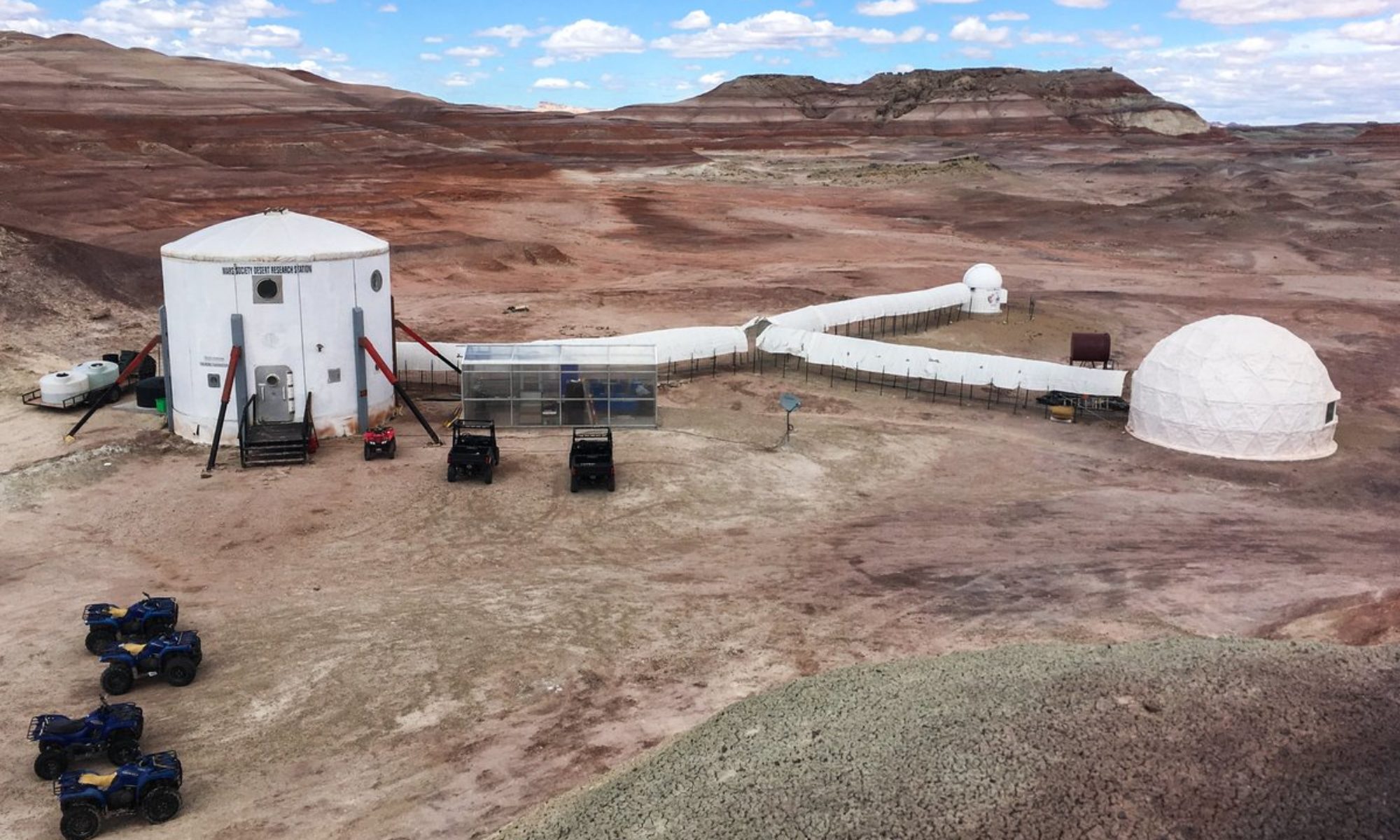Capcom,
Here is today’s EVA report also comming from Jérémy:
EVA Report:
EVA #11 Crew members: Jérémy Auclair (EVA leader), Louis Mangin, Gabriel Payen, Benoit Floquet
Location:
– Around the Hab
– Near Pooh’s Corner: 12S-518900E-4252000N
– Near Mid Ridge Planitia: 12S-517500E-4251500N
Time: departure at 09:12 a.m. Duration: 2 hour 24 minutes
Narrative:
When describing shortly today’s EVA, we could say that concerning our experiments it was a failure. After arriving at the instruments’ position near Pooh’s corner, we found out that both batteries were empty. Therefore, we plugged the new battery on MegaARES to start transferring data on Gabriel’s USB key. We took one empty battery (to start charging it) and went back to the Hab to start Benoit’s localization experiment. After more than five minutes the GPS chip still hadn’t found any signal.
We decided to continue the walk to get on the Hab ridge. We took quite a few pictures, Louis with his camera and me with mine, on which I had mounted my orange filter (for my personal pictures). After we arrived over the Hab we headed back to the Hab. We took the ATVs to go back to Pooh’s Corner to finish MegaARES’ data transfer.
Once the transfer was done we plugged the LOAC on the battery. But once again the power system was broken. This time it was the switch which was broken. We took the decision to bring the two batteries and the LOAC back to the Hab to fix the power system.
Unfortunately, on the way back to the Hab, one of the batteries fell of one of the ATV 30 meters away of the Hab because of a bump on the road. It broke and started to leak slightly. We must have attached it too weakly because we had to bring back two batteries instead of one. I quickly asked Habcom to put a garbage bag in the engineering Airlock. 3 Minutes later we put the leaking battery in the plastic bag to confine it. Once this (small) crisis was taken care of we started the final engineering check and ended the EVA.
Purposes:
– LOAC: Test of the battery level
– MegaARES: Replacement of the battery
– Localization experiment: test with increasing uncertainty on the positioning measure
Vehicles: 4 ATVs
9:12 a.m.: EVA#11 left Airlock
9:20 a.m.: EVA left the Hab using the four ATVs
9:33 a.m.: Arrival on the working place and beginning of battery tests and data transfert
9:39 a.m.: Return to the ATVs
9:42 a.m.: Turning on the ATVs to go back to the Hab
9:46 a.m.: Arrival to the Hab, Benoit starts his GPS instrument 9:50 a.m.: Beginning of Walk to find a way to climb on the ridge 9:57 a.m.: Benoit’s instrument still doesn’t work
10:22 a.m.: Louis finds a safe way to climb on the ridge
10:32 a.m.: Arrival on top of the ridge
10:42 a.m.: Beginning of way down the ridge
11:00 a.m.: Departure to the instruments on Pooh’s Corner
11:18 a.m.: Departure to the Hab with both batteries and the LOAC 11:36 a.m.: Entry in the Main Airlock
Best,
Louis

